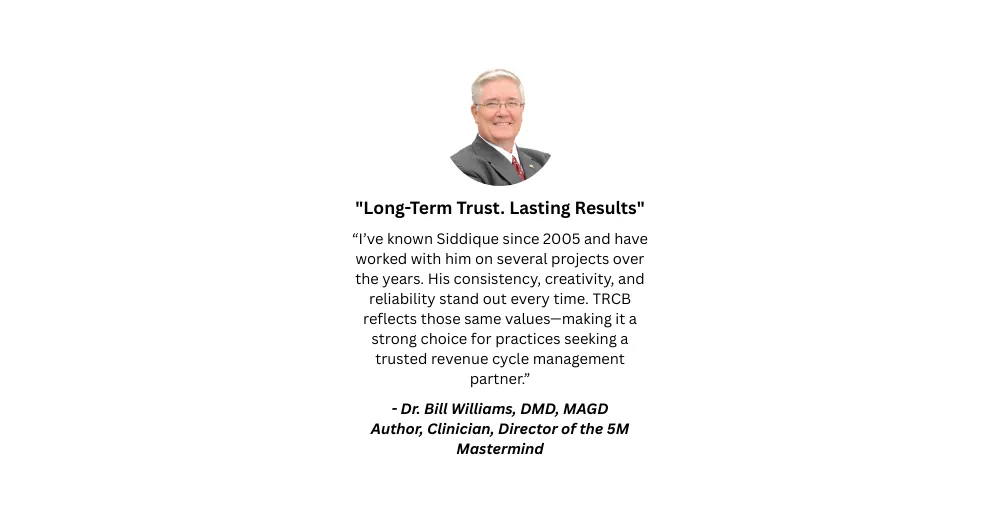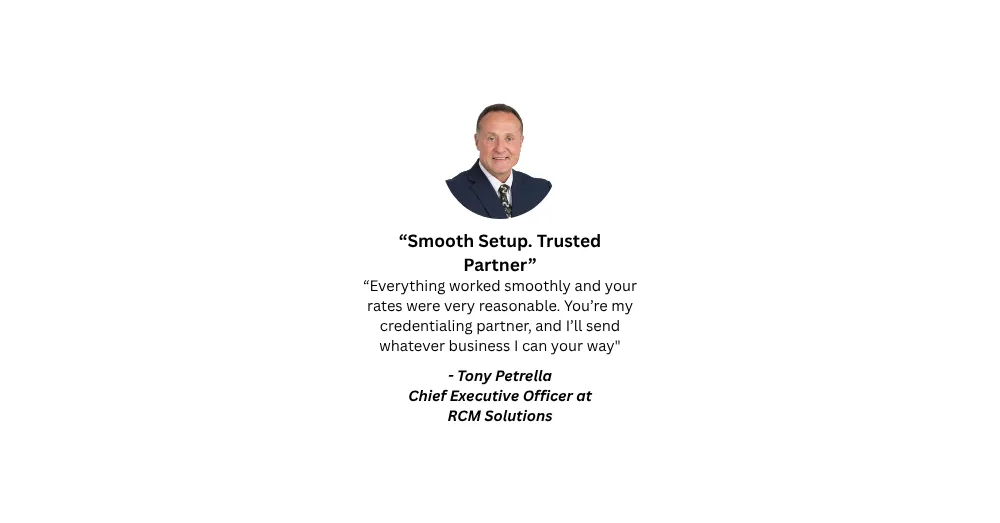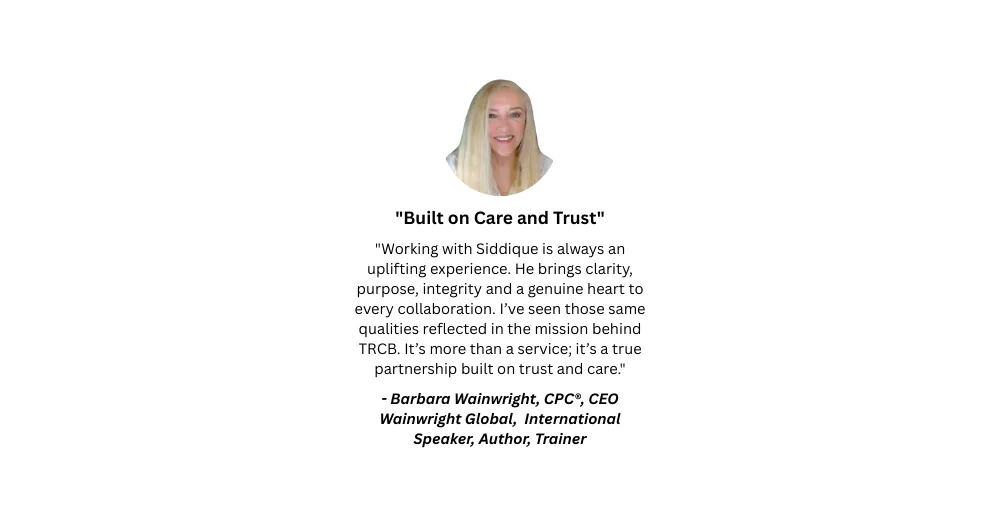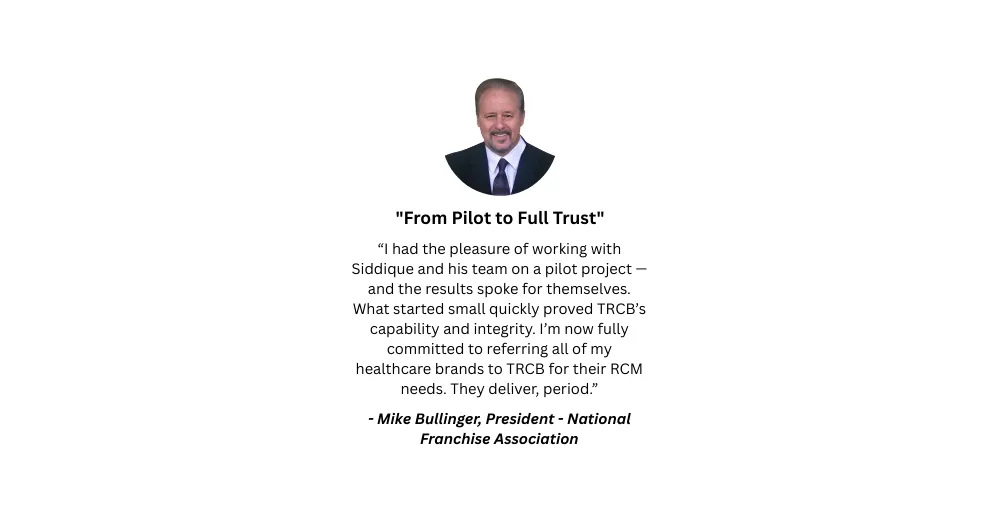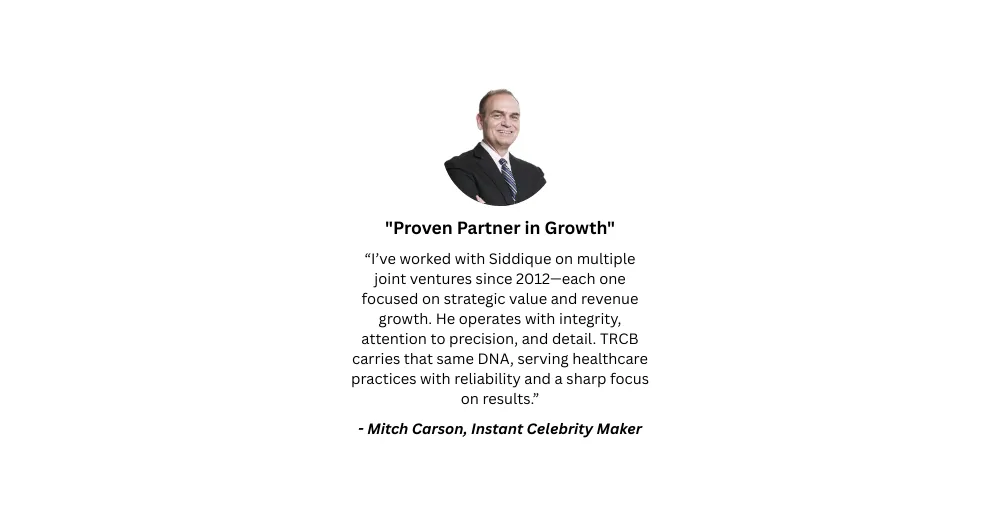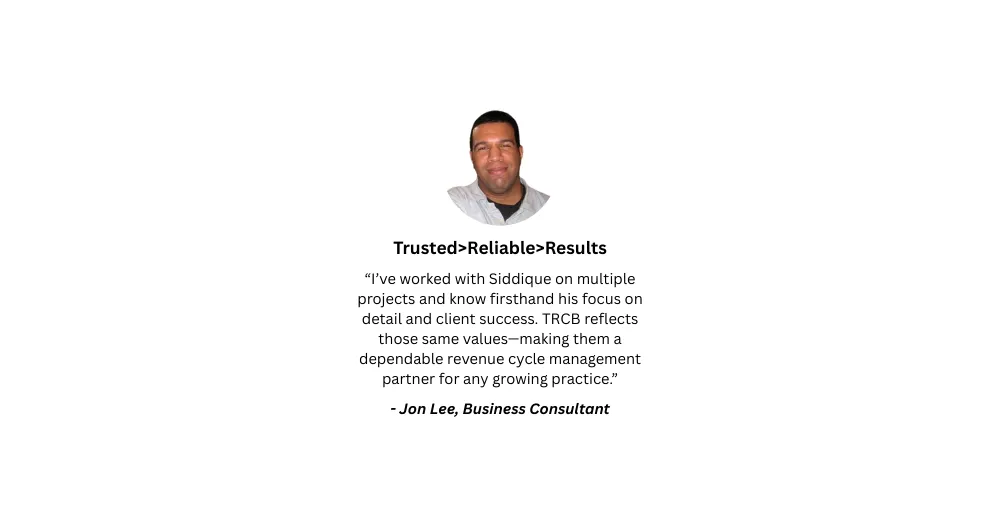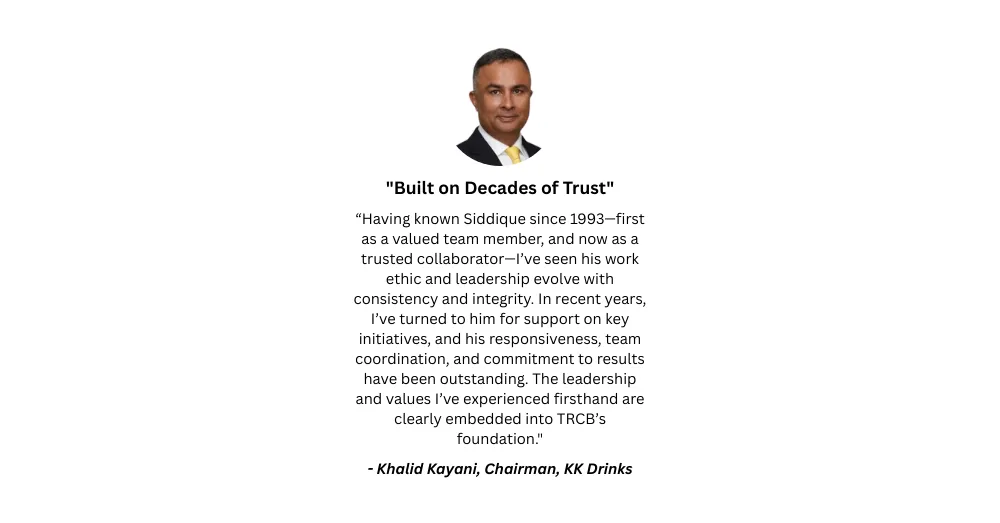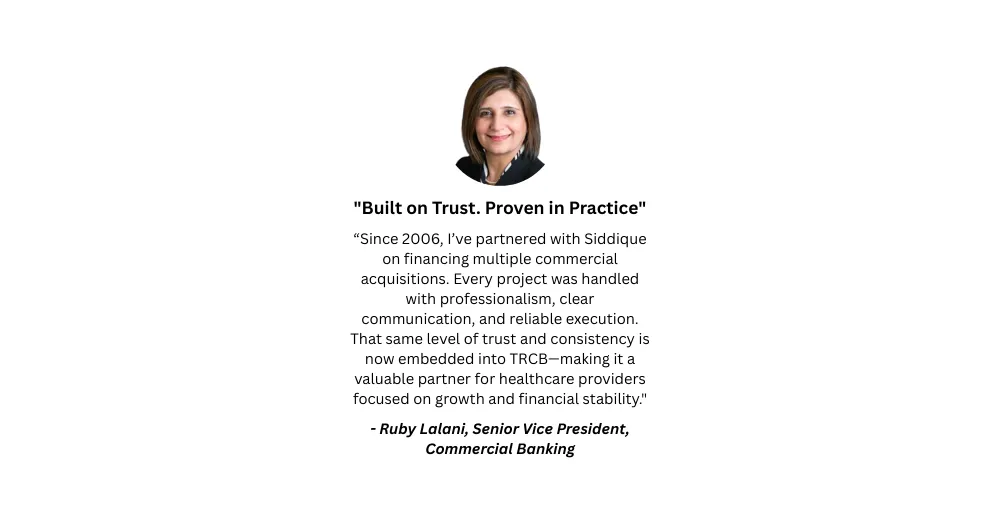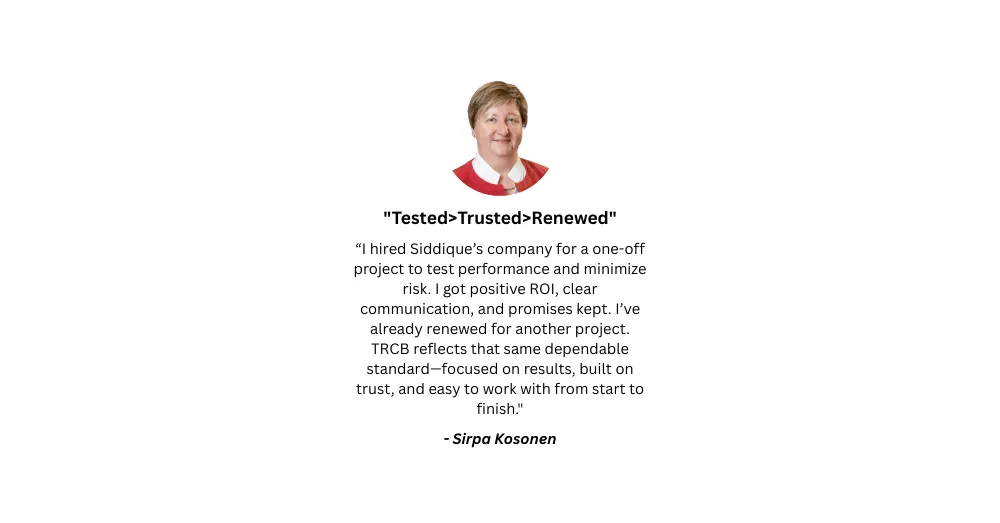Contract Negotiation
We negotiate smarter contracts so you can keep more of what you earn.
Optimizing medical reimbursements is crucial for the financial sustainability of medical practices. Effective negotiation with insurance carriers, improved administrative processes, and strategic contract management can significantly enhance revenue streams. Here’s how a medical practice can optimize its reimbursements:
Every dollar matters. Yet, most providers are still being underpaid by payers on outdated contracts that haven’t been reviewed in years. TRCB helps you renegotiate better rates with commercial payers so your reimbursement reflects the true value of your care.
Contract Negotiation FREE Consultation
Why Contract Renegotiation Matters
Payer contracts quietly decide how much your practice earns. When rates stay flat, overhead grows and margins shrink.
Our team identifies underperforming payer contracts, benchmarks your current reimbursements against market standards, and negotiates higher rates on your behalf. Most providers see 10–30% or more increases in reimbursement once negotiations are complete.

The TRCB Advantage
Other firms charge heavy retainers and take more than a year before you start seeing results.
At TRCB, we do things differently.
- No win, no fee: You only pay when we deliver approved increases.
- Faster results: Typical timeline is 2–6 months.
- Transparent process: You’ll see every step and every outcome.
- Proprietary models: Data-driven approach built for your specialty and payer mix.
- Personal communication: No layers or long waits. You’ll always know your status.
How It Works
1. Discovery
We review your payer contracts and reimbursement data.
2. Benchmarking
We compare your current rates against payer and market standards.
3. Strategy
We identify the payers and codes with the biggest potential for increase.
4. Negotiation
TRCB negotiates directly with commercial payers on your behalf.
5. Approval & Monitoring
Once new rates are approved, we confirm the increases appear in your paid claims.
6. Performance Reporting
You receive a transparent summary of results and increases.

Guaranteed Performance-Based Partnership

We believe in partnership built on your success, not retainers.
If we don’t secure an approved rate increase, you don’t pay.
If we do, you share a mutually agreed small percentage of an increased reimbursement rates we helped you earn.
Simple. Fair. Results-driven.
Smarter Contract Negotiation That Grows Your Revenue
No retainers, no risk. TRCB earns only when we secure higher rates. We review, benchmark, and renegotiate your payer contracts so you keep more of what you earn.
Get In Touch with an Contract Negotiation Specialist
Have questions about improving your payer rates? Our specialists are just a call away. Get clear answers and expert guidance to help you secure higher reimbursements for your practice.
Serving Contract Negotiation Nationwide
Enjoy faster Contract Negotiation across the nation! TRCB's Contract Negotiation services are available in all states. So, wherever you might be, don’t hesitate to contact our expert team to grow your healthy growth. Contact us to get started now.

Contract Negotiation FREE Consultation
Frequently Asked Questions
Answers To Common Questions
Why should we use y’all?
Fair question. Practices choose us because we handle the heavy lifting research, payer benchmarking, and negotiations with no upfront cost and no fee unless we win.
Our data-driven process and years of payer experience help secure higher rates faster, while you stay focused on patient care.
Again it’s the bottom line: Done For You is better than Do It Yourself.
What is your success rate with contract negotiation?
Success rates vary by payer, state, and provider profile—factors like claim volume, tenure, and compliance history all play a role.
We build each case using real data on what payers reimburse other providers in your area for the same CPTs.
Our target is about a 50% success rate, and since we work on a no-win, no-fee basis, we only move forward when research supports a strong chance of increase.
I have negotiated our rate already with Aetna, but have gotten nowhere with United, so I would really be interested in that.
During our review we’ll analyze your top 5–10 CPT codes per provider, per payer, and per state (including Telehealth where applicable).
From there, we build a detailed, data-backed case specifically for United. It’s hands-on, detailed work—but our goal is simple: increase your cash flow. And since it’s no-win, no-fee, there’s zero risk to you.
Are your fees negotiable?
Yes, for larger groups. If you're billing $1M or more per month, have 5 or more providers, and 20 or more payers, we can discuss adjusted pricing. Otherwise, standard pricing applies.
Do you offer bundled pricing for multiple payers at once
We work on a no win, no fee model. There is no large retainer. We do not bill you just because we are doing the work. You only pay when we get an approved rate increase from a payer for a specific provider in a specific state.
We take a small deposit at the start to lock in the work. That deposit is fully credited back on the first approved increase. After that, each payer is treated separately, per provider, per state. That keeps it clean, trackable, and tied to real wins, not projections.
If you want us to go after multiple payers at once, we will. You are still only paying on actual approved increases. Not before.
What drives the months of timeline for contract negotiation?
Payers move slow. The cycle depends on payer availability, their internal review and approvals, and the complexity of each contract.
Can we prioritize urgent payers during onboarding?
Yes. We can flag the payers you consider urgent during onboarding and work those first.
We will still submit for each of your payers. We will build and present your top CPT codes for each payer so we are not leaving money on the table with the others.
With multiple CPT codes, do you track increases per code or by weighted average?
We show both. We break out the increase by CPT code. We also summarize with a weighted average.
Is the performance fee based only on claims actually paid at the higher rate?
No. The fee is based on projected volume from the past 12 months. We do not monitor or audit future claims after the new contract goes live, unless you alert us to underpayments.
If a payer later reduces rates or claws back, how do you handle it?
We work with the payer to understand and resolve it. It is case by case. Sometimes a payer will cut rates on its own after the fact, even after a negotiation.
Regarding 6 months of past claims: What does “recovery” include — hard denials only or also underpaid claims?
Recovery includes both. We go after denied claims. We also go after underpaid claims. We work any payment gaps we can challenge.
How long does it take?
Most contract negotiations close within 2–6 months, depending on payer responsiveness.
What specialties do you serve?
What are you providing for us that we couldn’t do ourselves?
Absolutely—you could do it yourself, but at a significant cost for buying access to the critical data one needs to successfully negotiate with payers.
More importantly the time you would take and lower success ratio you would have would actually cost you in the end.
We, however, bring years of experience and access to all the vital payer data and research tools that are expensive for a single practice to maintain—especially for something you’d use only once every few years.
Doing it in-house often becomes cost-prohibitive and not the best use of your team’s time. We handle everything so you can stay focused on patient care while we secure the best possible rates. As with most of what we offer practices, Done For You is better than Do It Yourself.
How much of an increase do you generally get?
Typically we see 10%–30% increases, depending on several factors — payer history, claim volume, specialty, and when your last rate increase was granted. Some payers allow reviews every year, others every 2–3 years, so timing also affects the outcome.
Everyone agrees the success fee percentage is very high plus filing fees, etc. Is that negotiable?
We understand the concern. Our success fee percentage only applies after we have already delivered increased reimbursement for you.
There is no filing fee. You are not paying us to try. You are paying us for the performance we already delivered. We only get paid when you get paid more. You carry no upfront risk. We take the risk and start the work at no cost to you.
Are there any hidden costs after we start
We understand the concern. Our success fee percentage only applies after we have already delivered increased reimbursement for you.
There is no filing fee. You are not paying us to try. You are paying us for the performance we already delivered. We only get paid when you get paid more. You carry no upfront risk. We take the risk and start the work at no cost to you.
If payers share a parent company, do you still negotiate with each payer or follow the credentialing payer irrespective of parent company?
If multiple payers sit under one parent company, we typically negotiate each payer individually. The exact approach can change based on the relationship inside that parent group.
Which payers move faster?
Some payers move faster when the contract is simple and their internal process is clean. The timeline still depends on the payer.
It also changes by state. The same payer can act very differently in different states.
There is no published list of fast payers. We only know how fast they move once we submit and start the process.
How do you define “incremental reimbursement increase”?
Incremental reimbursement increase is the dollar or percentage increase over your current or previous contracted rates for a given payer or CPT code.
We use this formula:
Fee = (Average New Rate − Average Historical Rate) × Actual Volume (Encounters) × Applicable Fee Percentage
Where:
Average Historical Rate is the weighted average reimbursement per CPT code per payer for the 12 months before signature.
Average New Rate is the new negotiated reimbursement per CPT code per payer.
Actual Volume is the number of encounters for each CPT code submitted to that payer in the prior 12 months.
We compare last year's volume to the new rates. We base the increase on that projection. Typical increases land between 10 percent and 20 percent.
Who verifies the calculations when paid claims come in at new rates?
Your billing team verifies. After signing, your team confirms that payments match the new fee schedule.
We recommend that you upload the new fee schedule into your EMR and map all claims, so underpayment is flagged automatically. If you find underpayment, we open a claim process and push it until it is corrected.
Will that language appear clearly in the contract?
Yes. We can include the full formula in the contract.
Do you refund part of the performance fee or is that a risk on the client?
Here is how it works.
When we negotiate higher rates and you get paid at those higher rates, the performance fee is earned. We do not issue refunds later if the payer drops rates or claws money back. That applies when we only handle contract negotiation.
If TRCB is also doing your coding and billing, the story is different. In that case we see every claim, every payment, and every underpayment. We chase the payer. We fight it. We correct it. For those clients we share the risk because we are managing the full revenue cycle in real time.
So if we only negotiate, the risk after approval sits with you.
If we negotiate and we run your billing, we take that on with you.
By the way, TRCB offers complete RCM services. Coding. Billing. Denial management. AR follow up. Payment posting. All inclusive. Very competitive rates. Ask us today.
Will you provide documentation to track recovered amounts and fees?
Yes. We provide detailed reporting. You will see the recovered amounts and how the 30 percent performance fee was calculated.
Which payers do you handle?
All major commercial payers nationwide — we do not negotiate government plans such as Medicare or Medicaid.
Do you handle multi-state practices?
Yes, we manage contract negotiations per provider, per state. We handle nationwide.
What Our Partners Say About Us
Copyright @TRCB 2010-2025

